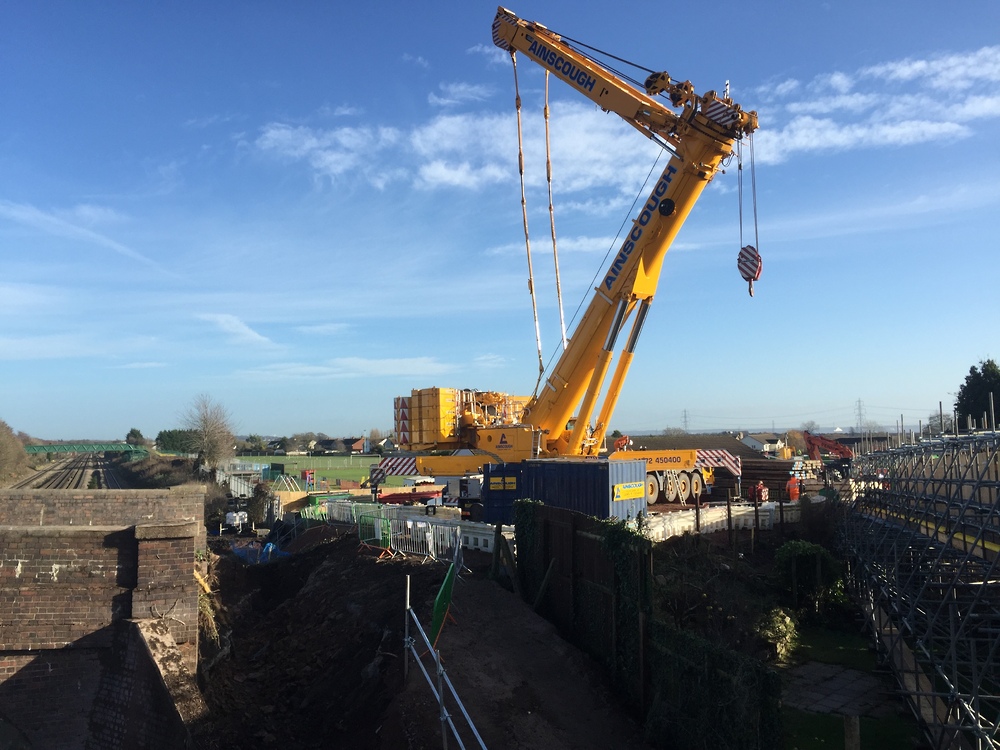- Building Acoustics
- Industrial Noise
- Vibration in Buildings
- Vibration in Pipework
- Planning, Permitting & Sustainability
- Pulsation Analysis
- Surge Analysis
- Measurement & Testing
- Services to Consultants
Noise Assessments in support of Section 61 Consent Applications for the Railway Infrastructure Industry help avoid the prospect of work being stopped due to Noise and Vibration Complaints
09 February 2017 by Chris Anderson, Director
What is a Section 61 Application?
A construction contractor can apply to a Local Authority (LA) for ‘prior consent’ for works under Section 61 of the Control of Pollution Act 1974 by submitting, in advance, details of the proposed work and the expected impact of noise and vibration on nearby sensitive receptors. The application typically involves completing the sections within a standard form supplied by the LA with details of proposed working hours, equipment to be used and predicted noise levels at sensitive locations. Supporting information (e.g. stand-alone noise and vibration reports or calculations etc.) can be attached.
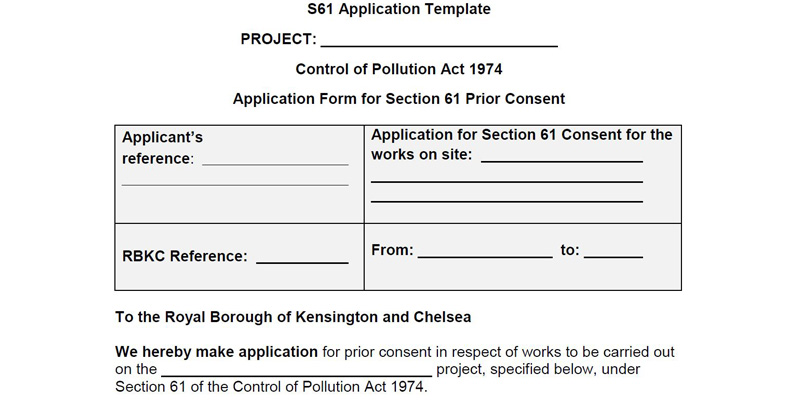
Figure 1: Excerpt from a typical Section 61 Application Form
When would a Section 61 application typically be used?
This type of application is often used when it is likely that the works will cause disturbance to residents but the contractor is willing to take the initiative in discussing the issues with the Local Authority and to establish the best practical means (BPM) for minimising intrusive noise and vibration. The alternative is that the Local Authority can use Section 60 of the Control of Pollution Act to impose its own criteria on the contractor, which may be more restrictive and therefore more likely to result in work being stopped or delayed if those criteria are exceeded.
Railway infrastructure projects (e.g. bridge replacements) often make use of Section 61 consents since the work will often involve heavy machinery and noisy activities close to residences. Further to this, whilst work is generally undertaken during the day where possible, any activities that require the cessation of rail traffic (where the contractor has to take ‘possession’ of the line) will generally be undertaken during the sensitive night-time and bank-holiday periods in order to minimise disruption to the transport system.
All of the above factors mean that the impact of noise and vibration is typically a major concern to the LA during such works and that it is therefore in the interests of the contractor to demonstrate that their responsibilities regarding noise and vibration mitigation are being taken seriously.
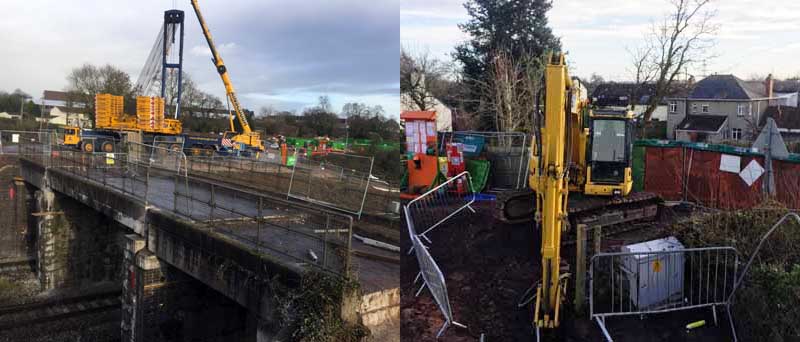
Figure 2: Bridge replacement works underway with housing nearby
What are the benefits of a Section 61 consent for the contractor?
The benefit of a Section 61 Consent to the contractor is that permission for the work is given in advance and, provided the consent remains in force and the terms of the consent are met throughout the works, a local authority cannot then take action under Section 60 of the Control of Pollution Act 1974 or Section 80 of the Environmental Protection Act 1990. A Section 61 consent can also be used in an appeal against a noise abatement notice, but compliance with the consent does not mean that nuisance action cannot be taken under Section 82 of the Environmental Protection Act 1990 or under common law.
When should a Section 61 Application be submitted?
A Section 61 Application must be submitted at least 28 days prior to commencement of work since this is the allocated time frame within which the LA must respond.
When should preparation of a Section 61 Application begin?
Spectrum would recommend that typically 4-8 weeks should be allowed for the preparation of the Section 61 Application since a significant amount of information and noise prediction work may be required, as described below.
What is involved in the preparation of a Section 61 Application?
The following table summarises the information and activities typically required in the preparation of a Section 61 Application :-
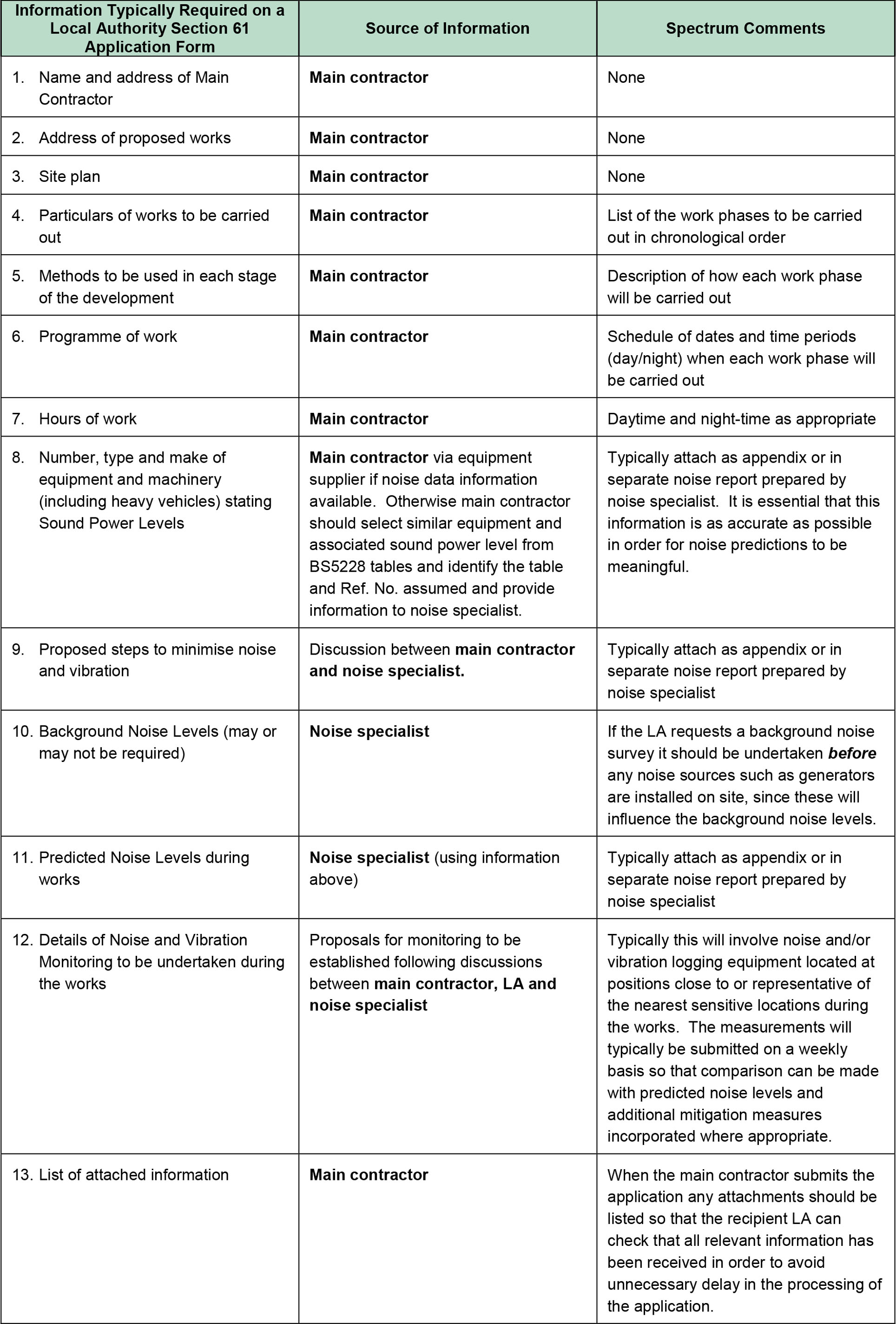
Table 1: List of information typically required to complete a Section 61 Application
What input does the noise specialist typically have?
- Background noise survey: The LA may request a background noise survey and if this is a requirement then it should be undertaken in the absence of any noise generating equipment or activities associated with the site. This will therefore by necessity usually require the survey to be undertaken early in the project and will typically involve noise and/or vibration measurements being taken over 24 hrs under calm and dry weather conditions. The survey may be either attended or un-attended depending upon circumstances, and if the survey is un-attended then noise and/or vibration equipment will be typically left at a secure location over 24 hrs.
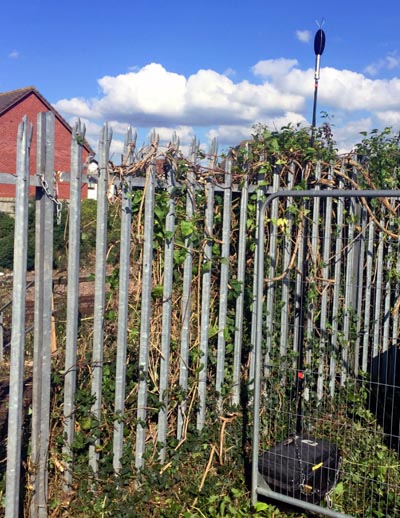
Figure 3: Noise logging equipment at a secure location
- Noise control recommendations: The noise specialist can discuss the likely benefits of the available noise and vibration mitigation measures with the main contractor and this should be done well in advance of the commencement of the works in order that the practicalities and logistics of the proposed mitigation measures can be allowed for. BS 5228-1:2009+A1:2014 Code of practice for noise and vibration control on construction and open sites – Part 1: Noise provides recommendations on typical noise mitigation measures that should be considered
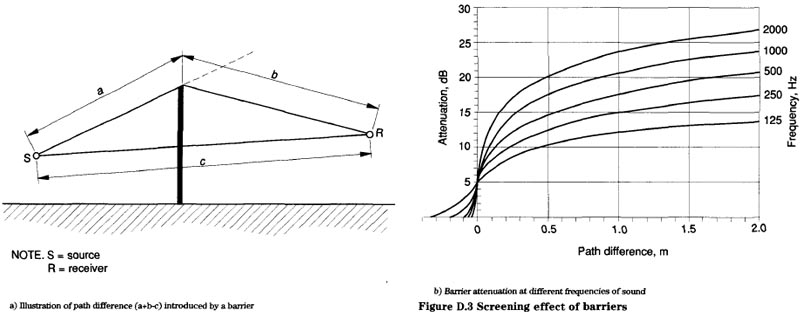
Figure 4: Temporary acoustic barriers are one of several noise mitigation measures recommended for consideration in BS5228
- Noise and vibration predictions: The noise specialist will use information on construction equipment noise levels and location, provided by the main contractor, to predict noise and vibration levels at sensitive locations using methods described in BS 5228-1:2009+A1:2014 Code of practice for noise and vibration control on construction and open sites – Part 1: Noise and BS 5228-2:2009+A1:2014 Code of practice for noise and vibration control on construction and open sites – Part 2.
Predicted levels can be provided numerically but also as noise contours for each phase of the works. Noise contours provide an instantaneous visual indication of the area that will be affected by noise from the works and are therefore often favoured by the LA.
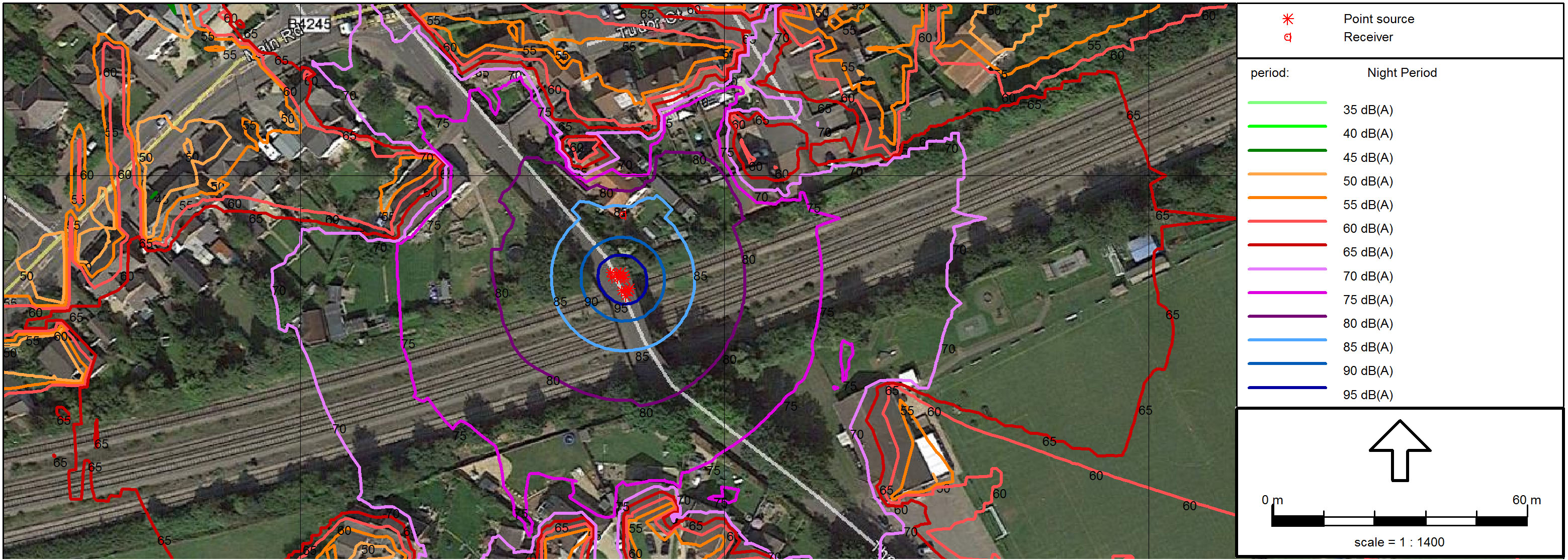
Figure 4: Noise Contour Map showing predicted noise levels during part of a bridge replacement project
- Noise and vibration assessment report preparation: The noise specialist will prepare a noise assessment report including the background noise survey, noise mitigation recommendations and noise predictions for the works. This report can then be submitted as part of the Section 61 Application and will include all of the noise and vibration information required, such that the form itself need only reference relevant parts of the report as advised by the noise specialist.
- Noise and vibration monitoring: In addition to the noise predictions issued as part of the Section 61 Application, the LA may also require noise monitoring to be undertaken whilst the work is being undertaken. The purpose of this would typically be to highlight any activities that are generating more noise than expected so that investigations can be made and noise levels reduced where possible. Measured data may also be used to validate the predictions and to provide valuable information for future projects.

Figure 5: Graphical representation of measured environmental noise levels

Further information on Environmental Noise & Vibration Measurement
